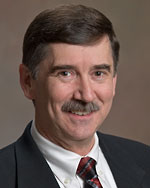When most of us enter a health care facility, we are probably thinking about our health rather than more abstract concerns, such as how all of the resources that support our health came together in one place. Who really asks: How did these medical professionals happen to be in such a convenient location with state-of-the-art training and facilities?
Yet, behind the scenes of health care delivery are people whose job is to bring together the inputs needed to safeguard our health. Stephen L. Christopoulos is the Director of Decision Support for the Lehigh Valley Health Network (LVHN), which includes three clinical campuses, numerous outpatient facilities and specialty programs as well as primary and specialty care physician practices.
As both a seasoned public health researcher and business analyst, Christopoulos uses data from the Pennsylvania Health Care Cost Containment Council (PHC4) to solve resource allocation challenges in the same way a health economist might: determine the level of “demand” for various health care needs so LVHN can find a way to provide those services.
After initial consultation with PHC4 analysts, who sort and program the raw data into meaningful empirical categories, Christopoulos and his team undertake a number of analyses that, among other things, compare the incidence rates of various conditions and track patterns of patient behavior and utilization. The results can then be used to develop locally based programs and to recruit the medical specialists needed to meet the clinical needs of the population.
One of the things Christopoulos discovered while looking at “outmigration patterns” was that many local residents were traveling great distances to get specialized care. “A significant number of people were going elsewhere to get treatment for specialties that we provide here at lower cost and with high quality outcomes,” he said.
In addition to improving ease of access to services overall, LVHN has developed extensive programs in a number of clinical areas such as cancer treatment, cardiovascular medicine, neurosciences, pediatrics, trauma, perinatal care, and burn treatment. LVHN’s heart surgery program is the third largest in the state and has been recognized nationally eight times in annual rankings by U.S. News and World Report. Its Cancer Center is the fourth largest in Pennsylvania in terms of the number of patients it treats.
Christopoulos’s work largely stays off the radar screen of the public even though it has dramatically helped to improve health care quality and delivery for many patients. But getting credit is not what drives Christopoulos, who focuses on the impact of his empirical efforts. He simply underscores, “Something as abstract as data analysis can make a real difference in the everyday lives of people.”
Return to the Case Studies page: VIEW ALL CASE STUDIES


